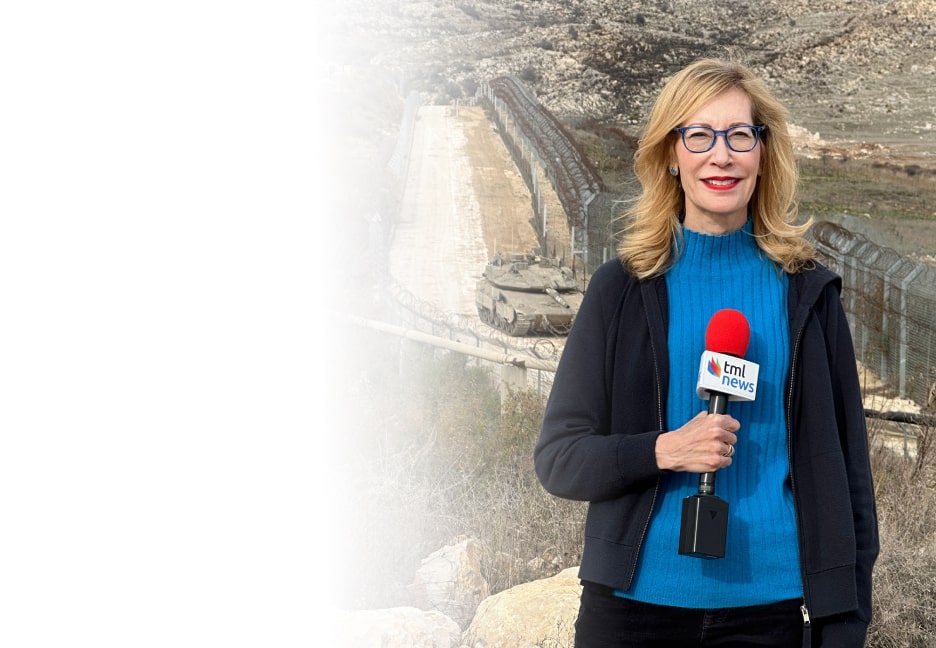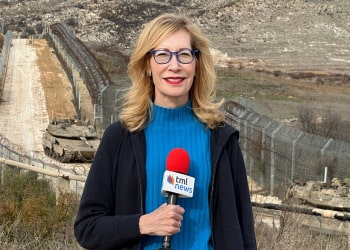The smell of paint wafts through the streets of Beirut. In the trendy neighborhoods of Gemmayzeh and Mar Mikhael, newly renovated buildings shine with their new colors. A range of pastel hues—green, pink, yellow, blue—has become the postcard of recent summers. Foreign tourists, on the other hand, turn their gaze and also photograph the remains of destruction left on the avenues adjacent to the port.
Half a decade after it blew up, life has returned to these neighborhoods. But not all of it. By mid-morning, neighbors no longer go out to the shared alley for coffee. Nor is there a trace of the chickens that roamed free in the same passage. On the horizon, however, remains the perpetual reminder of the tragedy of August 4, 2020. A tragedy that left a wound that still has to heal.
Surrounded by the deep blue sky, the remains of the silos dominate the skyline of the Lebanese capital as it meets the sea.
Five years ago, 2,750 tons of improperly stored ammonium nitrate caused one of the largest nonnuclear explosions in world history. At least 220 people died, another 6,000 were injured, and 300,000 more were left homeless at 6:07 p.m. on that Tuesday in August.
Five years later, the city has not recovered. It may never happen. In the worst-affected neighborhoods, constant reminders of the tragedy remain. Facing a still-ruined port, the abandoned building of the Lebanese electricity stands frozen in time, destroyed and ridge-cut by such a brutal blast.
It symbolizes the inefficiency and dysfunction of the state and its abandonment of all public functions, in addition to the collapse of the infrastructure
It froze in the seconds following the explosion. Standing tens of meters tall, not a single window remains intact. At its feet, a tangle of iron bars blocks access to the building. “It symbolizes the inefficiency and dysfunction of the state and its abandonment of all public functions, in addition to the collapse of the infrastructure,” urbanist Laura Aziz said.
“Five years after the explosion, there are still very clear physical scars in the city related to it, so given the port’s strategic location, to this day, Lebanese and Beirut residents who live in these neighborhoods connected to the port and pass through there are reminded daily of what happened,” Aziz told The Media Line.
This holiday season, give to:
Truth and understanding
The Media Line's intrepid correspondents are in Israel, Gaza, Lebanon, Syria and Pakistan providing first-person reporting.
They all said they cover it.
We see it.
We report with just one agenda: the truth.


On that August 4, the State was nowhere to be seen, nor was the municipality or any public representative. “Unfortunately, we are still the same,” said urban planner George Haddad.
In just seconds, Beirut changed. Beyond the port, the explosion destroyed schools, streets, hospitals, and homes, and many businesses were forced to close. This, in turn, resulted in economic losses estimated to be between $2.9 and $3.5 billion. Within a five-kilometer radius of the port area, 86% of businesses suffered damage from the blast.
The absence of these institutions didn’t mean the end. A 2022 survey by the Beirut Urban Lab revealed that between 60 and 80% of damaged apartments and businesses had been repaired. Most, if not all, were repaired thanks to initiatives by local and international NGOs, as well as donations from the massive Lebanese diaspora.
However, there are certain areas where life has not returned, because no reconstruction has taken place, or if it has, the buildings remain empty
“The neighborhoods affected by the explosion have largely been rebuilt, although there are still signs of physical destruction and damage, and even demographically, there have been changes in the population, but we can say that life has returned to many of these neighborhoods,” Aziz said. “However, there are certain areas where life has not returned, because no reconstruction has taken place, or if it has, the buildings remain empty,” she added.
It is yet another example of the tenacity of the Lebanese people to survive another episode of violence, rebuild, and remain attached to their homes, their streets, their businesses, their lives, and their context
Aziz said: “It is yet another example of the tenacity of the Lebanese people to survive another episode of violence, rebuild, and remain attached to their homes, their streets, their businesses, their lives, and their context”. Beyond the beautiful renovated historic buildings, illuminated each evening by a lively nightlife envied throughout the Arab world, some things have not returned.
“Apart from the material destruction, the explosion exposed the fragility of our urban, institutional, and social systems, leaving behind a physically wounded and symbolically fractured city,” Haddad told The Media Line. There is a need to “fix much more than walls; it’s about repairing the urban and human fabric. Public space itself created social bonds between people, but the explosion destroyed all those memories and altered the social pact between neighbors who shared a morning coffee or the neighbor who passed by another neighbor’s house and greeted each other,” he added.
Without a doubt, Mar Mikhael and Gemmayzeh are neighborhoods where these real estate dynamics significantly contributed to expelling people
Furthermore, in many corners barely scarred by the explosion, the specter of gentrification has settled. “It’s well known in Lebanon that real estate developers take advantage of every conflict, every crisis, and every disaster; that’s when land sales increase and evictions occur,” Aziz said. “Without a doubt, Mar Mikhael and Gemmayzeh are neighborhoods where these real estate dynamics significantly contributed to expelling people,” she said.
Renters inhabit three out of five homes in these neighborhoods. Prices continue to rise. New languages can be heard in the streets, along with the clatter of carry-on suitcases. Entire buildings are available on Airbnb: every month, new restaurants and bars with English-only menus.
Walking through the streets of Mar Mikhael and Gemmayzeh, one would hardly imagine that, less than two kilometers away, a historic explosion took place. The 43-meter-deep crater is a testament to this. For urban planners and architects, the return to life in these neighborhoods devastated half a decade ago could be a “good story” of rapid reconstruction, as Aziz argued.
But beyond the freshly painted historic buildings and the return of many, though not all, residents, some nuances keep the wound open: all those “lost opportunities.” In a city with barely one square meter of public space per resident, the destruction could have given way to green. To a vibrant, not pastel, green that would be for all residents of Beirut. It wasn’t.